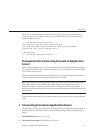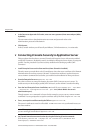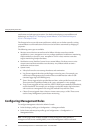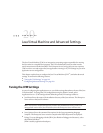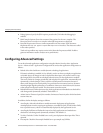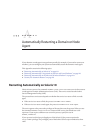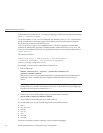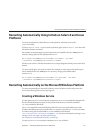
Java Virtual Machine and Advanced Settings
The Java Virtual Machine (JVM) is an interpretive computing engine responsible for running
the byte codes in a compiled Java program. The JVM translates the Java byte codes into the
native instructions of the host machine. The Enterprise Server, being a Java process, requires a
JVM in order to run and support the Java applications running on it. JVM settings are part of an
application server conguration.
This chapter explains how to congure the Java Virtual Machine (JVM
TM
) and other advanced
settings. It contains the following sections:
■
“Tuning the JVM Settings” on page 219
■
“Conguring Advanced Settings” on page 220
Tuning the JVM Settings
As part of conguring the application server, you dene settings that enhance the use of the Java
Virtual machine. To change the JVM conguration using the Admin Console, select
Application Server > JVM Settings tab and dene the general JVM settings as follows:
■
Java Home: Enter the name of the installation directory of the Java software. The Enterprise
Server relies on the Java SE software.
Note – If you enter a nonexistent directory name or the installation directory name of an
unsupported version of the Java EE software, then the Enterprise Server will not start.
■
Javac Options: Enter the command-line options for the Java programming language
compiler. The Enterprise Server runs the compiler when EJB components are deployed.
■
Debug: To set up debugging with the JPDA (Java Platform Debugger Architecture), select
this Enabled checkbox.
JPDA is used by application developers.
20
CHAPTER 20
219



